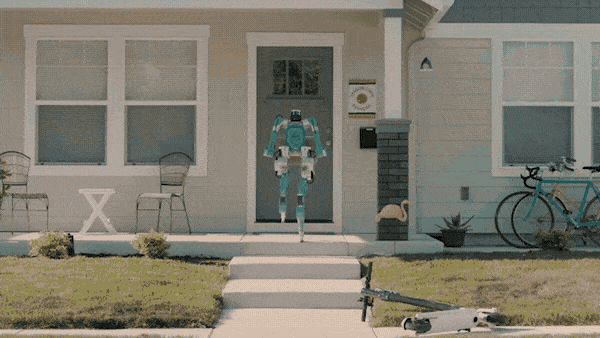Ford thinks robots and self-driving cars could team up to deliver packages

Autonomous vehicles and robots could share sensor data to help them better navigate the world around them.
The news: Ford is going to test a legged robot that unfolds from the back of an autonomous car to bring parcels to people’s doors. It’s teamed up with Agility Robotics, using its “Digit” robot to try out the idea. One day, a driverless taxi trip could double as a delivery service, dropping packages off between rides, Ford’s CTO suggested in a blog post.
Digit: Ford says the robot can carry packages up to 40 pounds, walk up and down stairs, work around obstacles, and regain its balance if it’s bumped. Bipedal robots have some advantages over wheeled ones: they can deal with obstacles and stairs more easily. However, they’re slower and less stable. Could Digit get up again if it was pushed over, for example?
A crowded market: The boom in home deliveries means companies are scrambling to find quicker, cheaper ways to get goods to your front door. Amazon and FedEx are working on their own pilots, and several smaller players have launched deliveries on college campuses.
A compelling combination: The combination of driverless car and robot is compelling, especially because the two could share camera and lidar sensor data to help each understand their surroundings. The robot could also charge in the car, helping to reduce the need for lots of bulky batteries.
However, we’re still many, many years away from this concept becoming a reality. Ford’s own CEO recently admitted that driverless cars are still years off, and there are still plenty of technical barriers to overcome before we ever see the robot-car duo launched in the wild.
Sign up here to our daily newsletter The Download to get your dose of the latest must-read news from the world of emerging tech.
Deep Dive
Artificial intelligence
Large language models can do jaw-dropping things. But nobody knows exactly why.
And that's a problem. Figuring it out is one of the biggest scientific puzzles of our time and a crucial step towards controlling more powerful future models.
Google DeepMind’s new generative model makes Super Mario–like games from scratch
Genie learns how to control games by watching hours and hours of video. It could help train next-gen robots too.
What’s next for generative video
OpenAI's Sora has raised the bar for AI moviemaking. Here are four things to bear in mind as we wrap our heads around what's coming.
Stay connected
Get the latest updates from
MIT Technology Review
Discover special offers, top stories, upcoming events, and more.